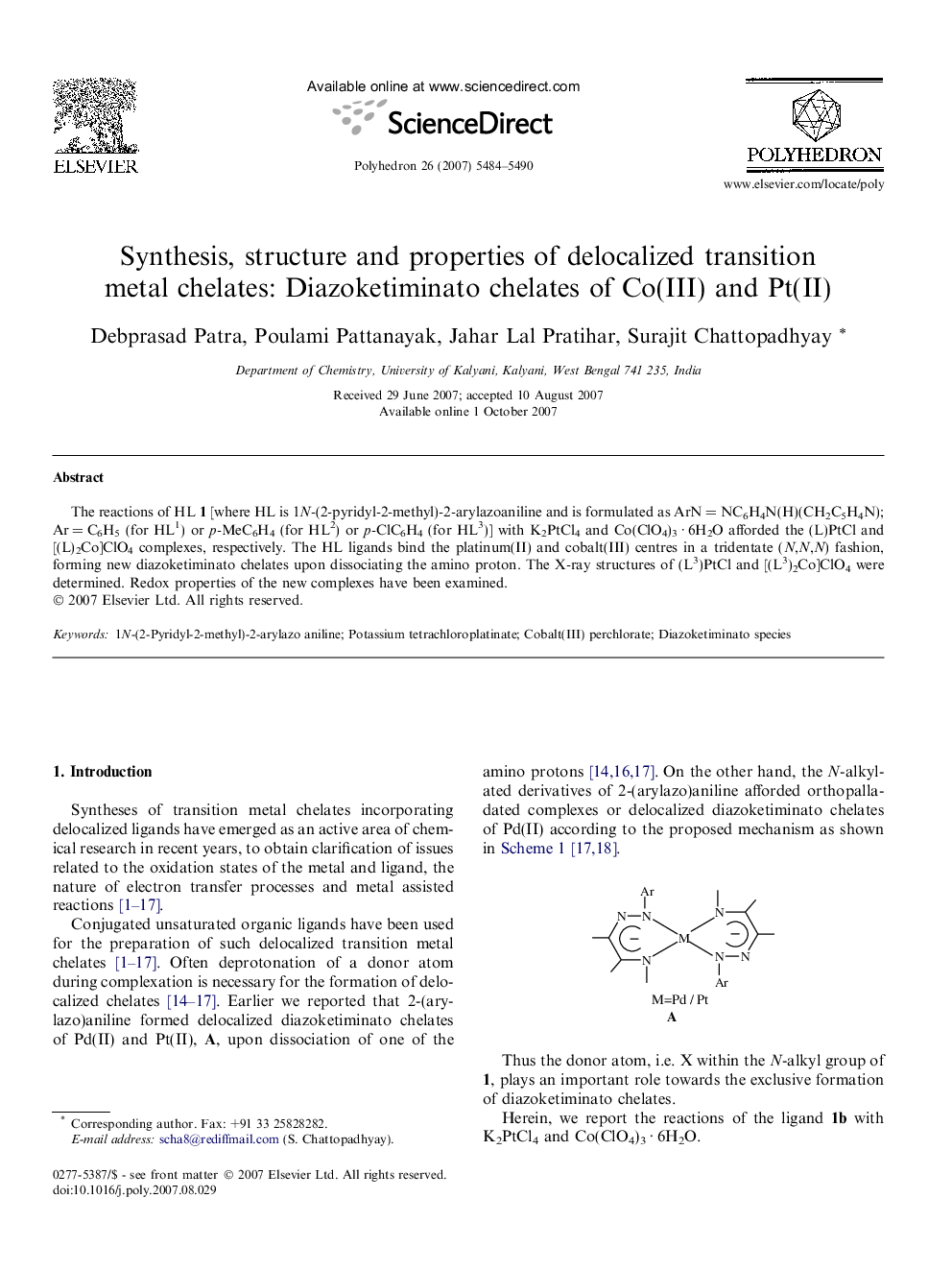| Article ID | Journal | Published Year | Pages | File Type |
|---|---|---|---|---|
| 1335381 | Polyhedron | 2007 | 7 Pages |
The reactions of HL 1 [where HL is 1N-(2-pyridyl-2-methyl)-2-arylazoaniline and is formulated as ArN = NC6H4N(H)(CH2C5H4N); Ar = C6H5 (for HL1) or p-MeC6H4 (for HL2) or p-ClC6H4 (for HL3)] with K2PtCl4 and Co(ClO4)3 · 6H2O afforded the (L)PtCl and [(L)2Co]ClO4 complexes, respectively. The HL ligands bind the platinum(II) and cobalt(III) centres in a tridentate (N,N,N) fashion, forming new diazoketiminato chelates upon dissociating the amino proton. The X-ray structures of (L3)PtCl and [(L3)2Co]ClO4 were determined. Redox properties of the new complexes have been examined.
Graphical abstractThe syntheses of Pt(II) and Co(III) complexes incorporating tridentate (N,N,N) diazoketimine ligands give the opportunity to obtain new delocalized chelates of Pt(II) and Co(III).Figure optionsDownload full-size imageDownload as PowerPoint slide
